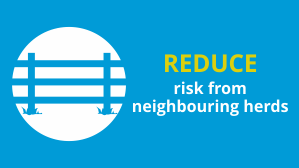 Land Based Learning
Land Based Learning
Course Content
Topic outline
-
 Bovine tuberculosis (bTB) is a chronic, infectious and primarily respiratory disease caused by the slow-growing bacterium Mycobacterium bovis (M. bovis).
Bovine tuberculosis (bTB) is a chronic, infectious and primarily respiratory disease caused by the slow-growing bacterium Mycobacterium bovis (M. bovis). It is a 'notifiable disease' and therefore if you suspect a case of bTB you must report to the APHA (Animal and Plant Health Authority)
If you suspect a notifiable disease in your animals you must report it immediately by calling the Defra Rural Services Helpline on 03000 200 301. In Wales, call 0300 303 8268. In Scotland, contact your local Field Services Office. Failure to do so is an offence.
Notifiable diseases in animals - GOV.UK (www.gov.uk)
bTB is mainly a disease of cattle and other bovines, but can affect a wide range of mammals.
The government is committed to implementing a comprehensive 25-year strategy to eradicate bTB in England.An independent review of the government's bTB strategy was carried out by Professor Godfray and his team and was published in November 2018. The government published its response to the review in March 2020, setting out its priorities for the next five years.
In 2021 The strategy was further strengthened to include:
- Work on badger vaccination, increased cattle testing and development of cattle vaccine to be accelerated
- Licensing of new intensive culls set to end after 2022 following a significant reduction in the disease
- New schemes launched to roll out badger vaccination across the country
Biosecurity
A key component of the bTB eradication strategy is implementation of a simple five point plan supporting the application of good biosecurity:
- Restrict contact between badgers and cattle
- Manage cattle feed and water
- Stop infected cattle entering the herd
- Reduce risk from neighbouring herds
- Minimise infection from cattle manure
This course is designed to provide background to these five points and the scientific principles that they are based on. Scroll down the course page and work through the content to find out more.
-

This topic introduces ways of reducing the risk of bTB infection from neighbouring cattle herds. It is made up of resources to help you develop your understanding of the risks that neighbouring herds pose and the ways in which this risk can be reduced.
It introduces the following topics:
- How to check the local bTB situation
- How to establish effective barriers between cattle herds
- The risks of sharing equipment and how these can be minimised
Click on the link below to find out more: